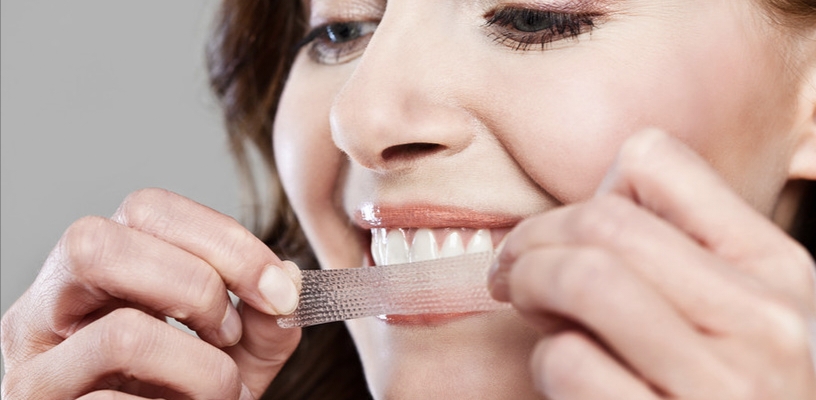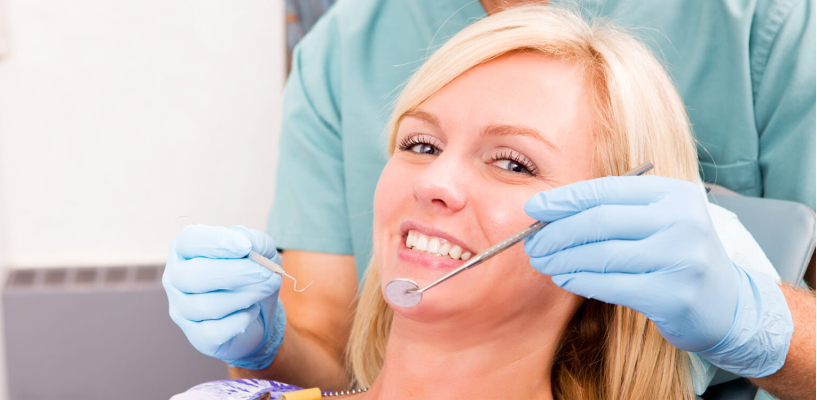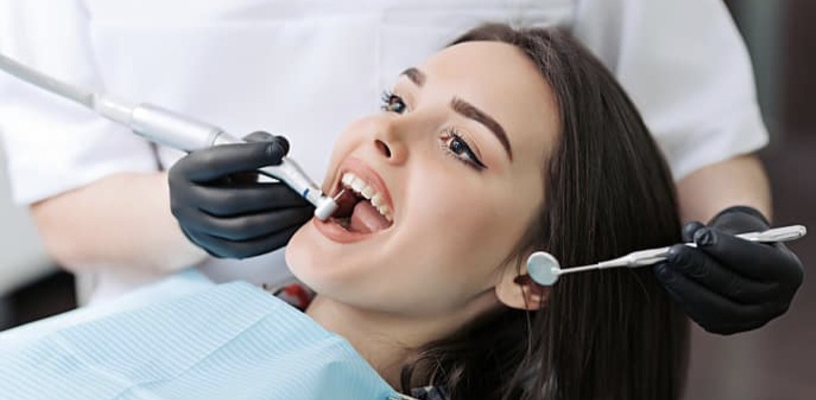
Do teeth whitening strips work?
The short answer is yes. Teeth whitening strips may whiten the teeth. However, they may not be as useful as the in-office treatments. Whitening strips may remove surface stains caused by drinks and food. However, they are not capable of removing stains that are caused by health problems.
What are Teeth Whitening strips?
Teeth whitening strips refers to small plastic strips having a hydrogen peroxide gel which is applied to your teeth. It depends on the instructions of the manufacturer which whitening strips can be used for 30 minutes in a day or for 2 weeks to see a significant whitening effect.
-
Why is at-home teeth whitening getting popular?
At-home teeth whitening is getting popular as the outcome is lower tooth sensitivity compared to in-office bleaching. However, you need to follow the instructions given by the manufacturer. If you want to achieve an optimal regimen of tooth whitening, then you need to follow in-office treatment along with home-based touch-up treatments.
How teeth whitening do strips work?
-
The science behind teeth whitening strips
To understand the working of teeth whitening strips, you need to know about the science behind them. In the whitening agent, there are active oxygen molecules present that penetrate the enamel of the teeth. After that, it reacts with the discolored molecules which can cause tooth discoloration. Due to this, the active oxygen molecules will spread and whiten the complete tooth while keeping the enamel protected.
-
Active ingredients
One of the main ingredients present in Crest 3D Whitestrips is hydrogen peroxide. Every strip is then carefully crafted by a gel that is powered by the primary ingredient. It is because of hydrogen peroxide that Crest 3D Whitestrips may remove any dental stains. However, the strips must be used as directed.
-
Mechanism of stain removal
The stain removal process takes place when peroxide diffuses into the tooth when a whitening gel is applied with a strip at the exterior of the tooth. Along with the decolorization of chromogens, it may happen that due to oxidation reactions, the color may change other optical properties of the tooth including fluorescence and light scattering.
Three Types of Teeth Stains
Stains may have different types depending on whether they happen on the tooth and how they are forming. There are three categories of teeth stains such as:
-
Extrinsic tooth stains: The extrinsic stain is formed at the outer part of the tooth. They make a home on your enamel that is responsible for protecting the softer part of the tooth known as dentin that is present underneath. They are easier to remove as they do not move below the enamel into the inner part of the tooth.
-
Intrinsic tooth stains: The intrinsic tooth stains generally occur below the enamel i.e. on dentin which is a sensitive layer. Dentin gets exposed when the enamel is thin or is wearing down due to poor dental hygiene. Intrinsic tooth stains are tough to remove. However, it can be done easily.
-
Age-related tooth stains: Teeth also show signs of aging as you get older. Two fundamental things that happen as your teeth age are that your dentin gets darker and your enamel starts getting thinner. The combination may cause unwanted tooth discoloration that may not be controlled.
-
Different types of teeth whitening strips
|
Peroxide-based |
Charcoal |
Non-peroxide |
Enzyme |
|
|
Pros |
|
|
|
|
|
Cons |
|
|
|
|
Evaluating the effectiveness of teeth whitening strips
-
What clinical studies show
Clinical studies show that teeth whitening strips may be used to effectively whiten teeth and mostly those that have peroxide present in them. Let’s see what happens in hydrogen peroxide-based strips and non-peroxide-based strips.
-
Hydrogen peroxide-based strips: In these strips, there is a significant improvement in tooth color that may be noticeable within 7 to 14 days of using consistently.
-
Non-peroxide and enzyme-based strips: The data on these strips are limited. However, they show some improvements, especially for surface stains.
Most studies emphasize the fact that the usefulness of whitening strips is dependent on the the active ingredient present, how much concentration it has, and the time when it is applied.
-
Factors influencing effectiveness
-
Degree of discoloration and individual responses
Extrinsic stains from tobacco, tea, and coffee are more responsive to whitening strips whereas intrinsic stains caused due to medications and aging may need professional whitening treatments. However, the degree of discoloration is dependent on individual factors such as adherence, tooth porosity, and enamel thickness.
-
Safety and precautions: You need to take safety precautions to maintain the effectiveness of teeth whitening strips.
-
Side effects to be aware of: The following are the side effects you need to be aware of while using teeth whitening strips:
-
Tooth sensitivity: Tooth sensitivity is one of the common side effects that occur with peroxide-based strips.
-
Gum irritation: Gum irritation is caused when the strips come in contact with the gums more often.
-
Enamel wear: Overuse of teeth whitening strips may cause enamel damage, especially the charcoal strips.
-
Best practices for safe use: The following are the best practices for safe use of teeth whitening strips:
-
Proper application techniques: While applying teeth whitening strips, you must follow the manufacturer’s instructions on how to place the strips and for how much time you can place them. You also need to ensure that the strip adheres to teeth without gum overlapping.
-
Minimizing potential risks: You can minimize the potential risks of whitening strip usage by the following:
-
Do not use whitening strips frequently or more often than recommended.
-
Keep rinsing with water after using the strips which will help to remove residual whitening agents.
-
Try to use desensitizing toothpaste if the sensitivity persists.
-
When to consult a dentist
If you have severe discoloration, then professional treatments may be more effective. You need to consult a dentist if you are experiencing intrinsic stains that the whitening strips may be unable to address or continuous sensitivity and gum irritation. If anyone has gone through dental restorations such as veneers or dental crowns, then they must first consult a dentist as strips won’t whiten them.
Maintaining a whiter smile: Tips and alternatives
-
Tips for long-lasting results after using whitening strips
-
Try to practice good oral hygiene by brushing your teeth twice a day with fluoride toothpaste.
-
Try to do daily flossing that will help to remove plaque and prevent teeth stains.
-
Limit your intake of tea, coffee, and dark-colored sauces
-
Try to use a straw for beverages as that can help to minimize your staining.
-
Make it a point to rinse your mouth after meals.
-
Quit smoking or consuming tobacco as they can cause severe staining.
-
Drink plenty of water that will help to wash any stain-causing particles and will also help to keep your mouth healthy.
-
Try to consume crunchy fruits and vegetables such as apples, celery, and carrots that will naturally clean your teeth as they provide scrubbing to your teeth.
Alternatives to Whitening Strips
Following are the alternatives to whitening strips:
-
Professional Teeth Whitening: When you do in-office treatments with the help of a dentist then the results are quicker and will prevent further staining.
-
Whitening Toothpaste: It is ideal for maintaining results and removing surface stains.
-
Whitening Mouthwashes: They are used to reduce the formation of new stains and also provide fresh breath.
-
Custom Whitening Trays: The dentist prescribes trays that have professional-grade whitening gel as the results are more consistent when you use strips.
-
Natural Remedies (Used with Caution): You can use oil pulling with coconut oil and baking soda that may prevent discoloration and enamel damage.
-
Regular Dental Cleanings: If you do professional cleanings, then it will remove tartar and plaque that can further lead to discoloration.
Are teeth whitening strips right for you?
Teeth whitening strips are an ideal choice for adults as they help to remove the stains from the teeth. However, they may cause some sensitivity and you must follow the dentist’s instructions before using them. They may also cause gum irritation as one of the side effects. It is more likely to occur with at-home bleaching in comparison to in-office procedures. Overuse may harm and damage the teeth.




